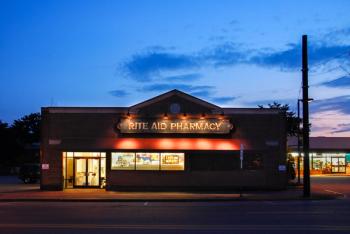
US Drug Spending Dropped in 2012
A report from IMS Institute for Healthcare Informatics finds that per capita medication spending dropped 3.5% in 2012-the first decline since the organization began tracking drug spending in 1957.
A report from IMS Institute for Healthcare Informatics finds that per capita medication spending dropped 3.5% in 2012—the first decline since the organization began tracking drug spending in 1957.
Overall US spending on medications fell in 2012, driven largely by expirations of patents on branded medications and increased use of generic medications, according to a report released today by IMS Institute for Healthcare Informatics. This is the first decline since the organization began tracking drug spending in 1957.
The report found that total spending on medications declined 1.0% to $325.8 billion in 2012, and per capita medication spending dropped 3.5% to $898. Expiration of patents on branded medications led to $28.9 billion in reduced drug spending, and overall spending on branded medications dropped $11.4 billion to $230.2 billion.
Also helping to reduce spending on drugs were increased use of generic drugs, which now comprise 84% of all prescriptions, and less spending on newly launched medications. Generics’ share of prescriptions has increased 30% in the last decade and is projected to reach 87% by 2017. When a generic option is available, it is now dispensed 95% of the time, a slight uptick from 2011.
The average pharmacy benefit copay dropped $2 to $121 in 2012, 72% of all 3.2 billion retail prescriptions had a copay of $10 or less, and just 3% of prescriptions cost more than $70. However, patients with commercial insurance had higher copays, typically $20 or more. The total number of prescriptions dispensed increased by 1.2%, but prescriptions per capita declined 0.1%. The greatest decline in prescriptions per capita by age group was 4.1% for those under the age of 18.
The top 5 areas in terms of medication spending in 2012 were oncology ($25.9 billion), mental health ($23.5 billion), respiratory agents ($22.1 billion), antidiabetics ($22.0 billion), and pain management ($18.2 billion). The top 5 areas in terms of number of prescriptions dispensed were antihypertensives (656 million), pain management (472 million), mental health (329 million), antibacterials (268 million), and lipid regulators (255 million).
“The cost curve for medicines was clearly bent in 2012, for better or for worse,” said Murray Aitken, executive director of IMS Institute for Healthcare Informatics, in a
Newsletter
Stay informed on drug updates, treatment guidelines, and pharmacy practice trends—subscribe to Pharmacy Times for weekly clinical insights.




















































































































































































































